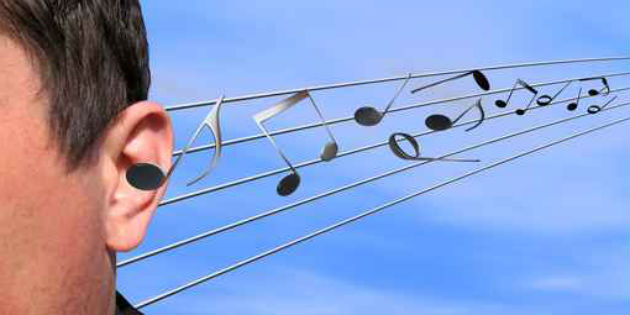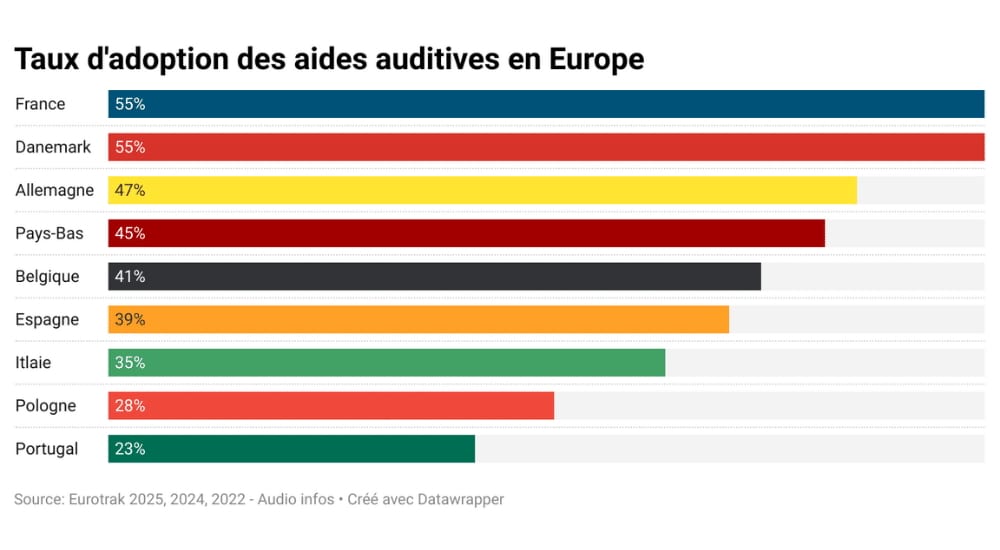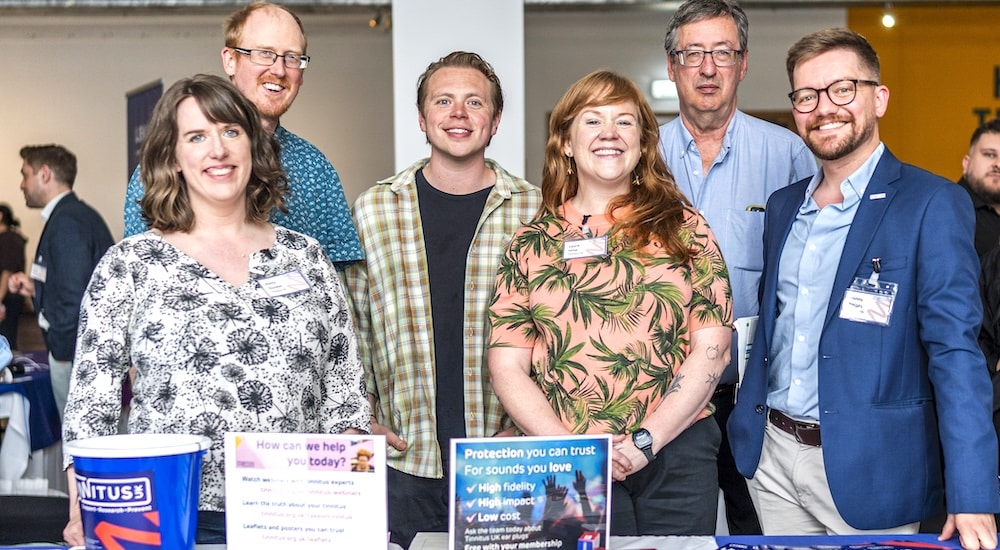IC patients with prior musical training have better language test scores
Music Perception
Understanding, enjoying, practising, and listeningto music, rather than just having it in thebackground, can be a therapeutic method to helpovercome specific situations.

Medical reports show that music hasbeen used in various approaches to autism patients, as well asthose with language disorders, hearing loss, and attention difficulties,among other complaints.
Meanwhile, persons with a certain musical sensibility can handleclinical tests with greater ease than those who have littlecontact with music. This was the conclusion of a research groupin otorhinolaryngology and related sciences, backed by theUniversity Health Sciences Foundation, through its study “Correlationbetween speech discrimation and musical perceptionin implant patients and normal-hearing persons,” carried out inthe Colombian capital, Bogotá.
Vertigo is not the same as dizziness
“Our method was to measure musical qualities in musical tone,melody, and timbre, applying the Clinical Assessment of Music Perception (CAMP) test to patients with a cochlear implant and normal-hearing persons,” explained Adelaida Plaza Ruiz,otorhinolaryngologist and otologist, ex-president of the ColombianAssociation of Otology and Neurotology.
In this research, tone testing allowed for the identification of patients’capacity to perceive low and high sounds within a range of 250 to10,000 millihertz. How easily do they detect changes? This dependson how many semitones the person requires in order to differentiateone tone from another; the idea is that the higher tone in the musicalscale should be identified, and four tones were used in the evaluation.The CAMP test evaluates melody in songs, eliminating the rhythmelement; the way in which the music is structured comes in a patternthat indicates the musical rhythm, for example: vallenato, salsa,or ballad. By removing the rhythm, the melody is then even and thepatient’s ability can be evaluated. In the test, songs without rhythm,i.e. pure melody, are more complex in terms of recognition, evenwhen one is familiar with them, but it is the best way to evaluatedhow patients perceive sound quality.
Finally, both normal-hearing patients and those with implants weregiven a timbre test, which consisted of recognising an instrument.In this test, each individual evaluated had to identify what musicalinstrument they were hearing, e.g. guitar, cello, trumpet, piano, etc.
The results confirm the influence of music
Once the CAMP tests were completed, “we analysed the percentagesobtained so as to measure both musical qualities and languageresults. We found some curious results, for example that patients withimplants found it very difficult to identify tone, while those with someprior musical training found this a little easier; normal-hearing patientsalso had difficulty identifying tone, but they did this more accuratelythan patients with implants,” pointed out Dr. Plaza (below).

When it came to melody, the pattern was the same as with tone. “Thosewith normal-hearing did better than patients with implants, but withtimbre the results were varied. Implant patients showed greater abilitywith certain instruments, among them guitar and trumpet; whilenormal-hearing patients identified piano and guitar with more ease,”said the otologist.
In one specific instance, it was observed that those who had lost theirhearing before the age of five-years-old recorded the lowest results inall the musical tests. This is because they went deaf in the prelingualstage, in other words they had not acquired language skills; meanwhile,those who suffered hearing loss when they were older, once they hadacquired language, had received stimulation in these areas.
Another great difference was revealed among normal-hearing personswho had prior musical training, and who managed to differentiatebetween tones very well; something similar occurred among implantpatients with some musical perception, and these achieved betterresults than subjects who lacked this ability.
The big question, then, is: do these results correlate to language or not?For Doctor Adelaida Plaza, they do correlate in implant patients andnormal-hearing persons. The study shows that better performance wasachieved in speech tests by implant patients who also got high resultsin musical perception, basically in timbre and melody.
According to another interpretation, people who are not musical mayhave greater difficulties when it comes to learning a language ordiscriminating speech. It is noteworthy that patients’ knowledge ofmusic did not need to be of professional level; basic training or havingreceived some classes was considered enough to confer an advantage.Within this panorama, otorhinolaryngologist Plaza Ruiz commentedthat, according to results, “it could mean that implant patients with asensibility for music can improve their speech since music awakensother areas of the brain. It would be good for hearing loss patientsto be involved in more music training while they are receiving othertypes of therapy, since musical stimulation is supremely important forinterrelating brain areas directly involved with musical perception, aswell as speech perception.”
As with all research, new questions arise, and one that the scientificcommunity will have to tackle at some moment is: how do you teachmusic to a hypoacusic patient when everything is designed for normalhearingpatients? There is a new specialty in musical therapy appearingand becoming a profession, with experts now set up in some of thecountry’s centres who are devoted to teaching patients with specialneeds how to develop musical abilities.
Endoscopic surgery, another option for specialists
In another area of the profession, Dr. Adelaida Plaza told Audio Infosabout one of the procedures that has grown internationally over thepast two years and in which Colombia is a leader in the Latin Americaregion. This is the field of endoscopic surgery, part of the evolutionfrom the microscope to the endoscope which has brought so manybenefits for patients.
“Bringing in endoscopic surgery in our country offers several advantagesthat optimise the procedures related to hearing. To begin with, we nowhave greater visualisation of structures that we could not observebefore due to the relatively limited capactiy of the microscope. Withthe endoscope we have a greater visual field, allowing us to makereal-time measurements to assure the success of patient recuperation,”pointed out Dr. Plaza.
Surgery currently using endoscopic techniques in Colombia includesextraction of tumours and tympanoplasty, among other procedures, andthis has led to shorter surgery times, and less-invasive and less-painfuloperations for patients, who need less recuperation time.
One of the specific subjects under investigation by Dr. Plaza is related toblockages in ventilation pathways that are evaluated using endoscopicvision. “We are comparing ventilation pathway blockages in normal earswtih those in patients suffering from chronic otitis media. This meanswe are studying blockage cases to get an idea of the prevalence ofcases so that if we find a really high percentage we will need to modifythe current surgery protocol. Hearing professionals would then beobliged to check the state of the ventilation pathways in proceduresand, if they find blockages, immediately take the necessary actions,”explains the otologist.
So far, it is looking like the importance of the presence of blockagescould mean that checking them would influence the prevention offuture infections and patient relapses. “If, while carrying out surgery, Irealise that there is obstruction in the ventilation pathways, I can clearthem so that the patient will have no further problems. Until now, thisprocedure was not possible because there was no tool allowing forit. With the endoscope, we can get to places we never imagined wewould reach, so we don’t need to stop at repairing the perforation wewere performing; we can also evaluate and prevent chronic infectionsin the ear,” added Adelaida Plaza.
To sum up, this means a change in concepts and the exploration ofprocedures that benefit patients’ quality of life, and for this one mustadvance in training processes not only for experienced professionals butalso for those who are on the point of completing their specialty studies.According to Plaza, “teaching endoscopic surgery is more dynamic,everything is on screen, is more attractive to learn, and the results aremore effective. So now we have courses and practicals aimed at otorhinolaryngologistsand otologists who want to update their knowledge sothey can start using endoscopes. People are shy of getting involved innew techniques but we are leading this process in Colombia and in theregion with the help of the universities and the Colombian Associationof Otology and Neurotology, and because of this we receive visits allyear round from professionals who want to train here.”
Read the complete article on Audio Infos Latin America 52 (bilingual):
Interested in Audiology in Latin America? Check Audioenportada!
Photos: A.P.R., Sergey Galushkoa – Fotolia, M.B.P.


